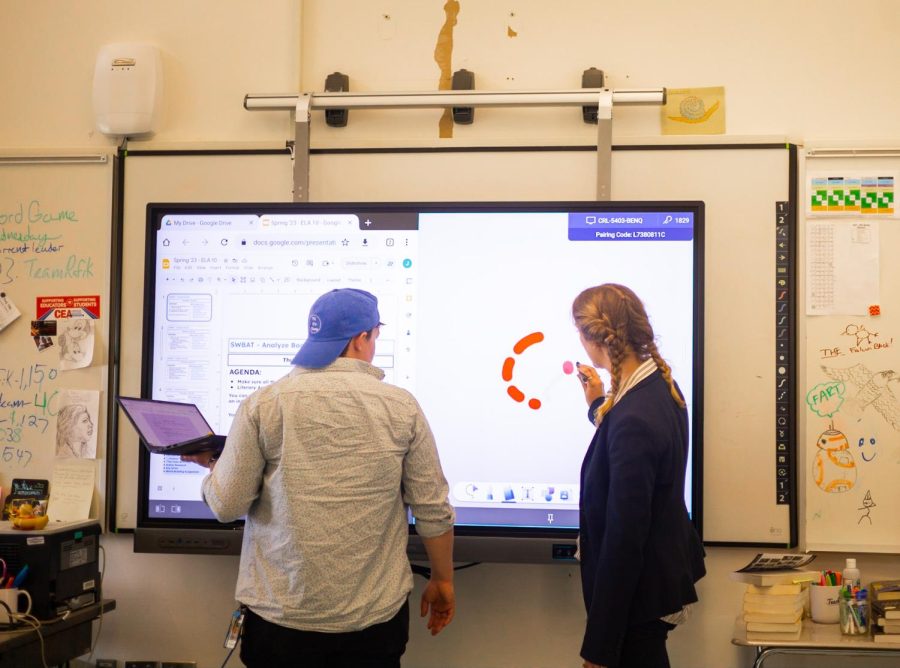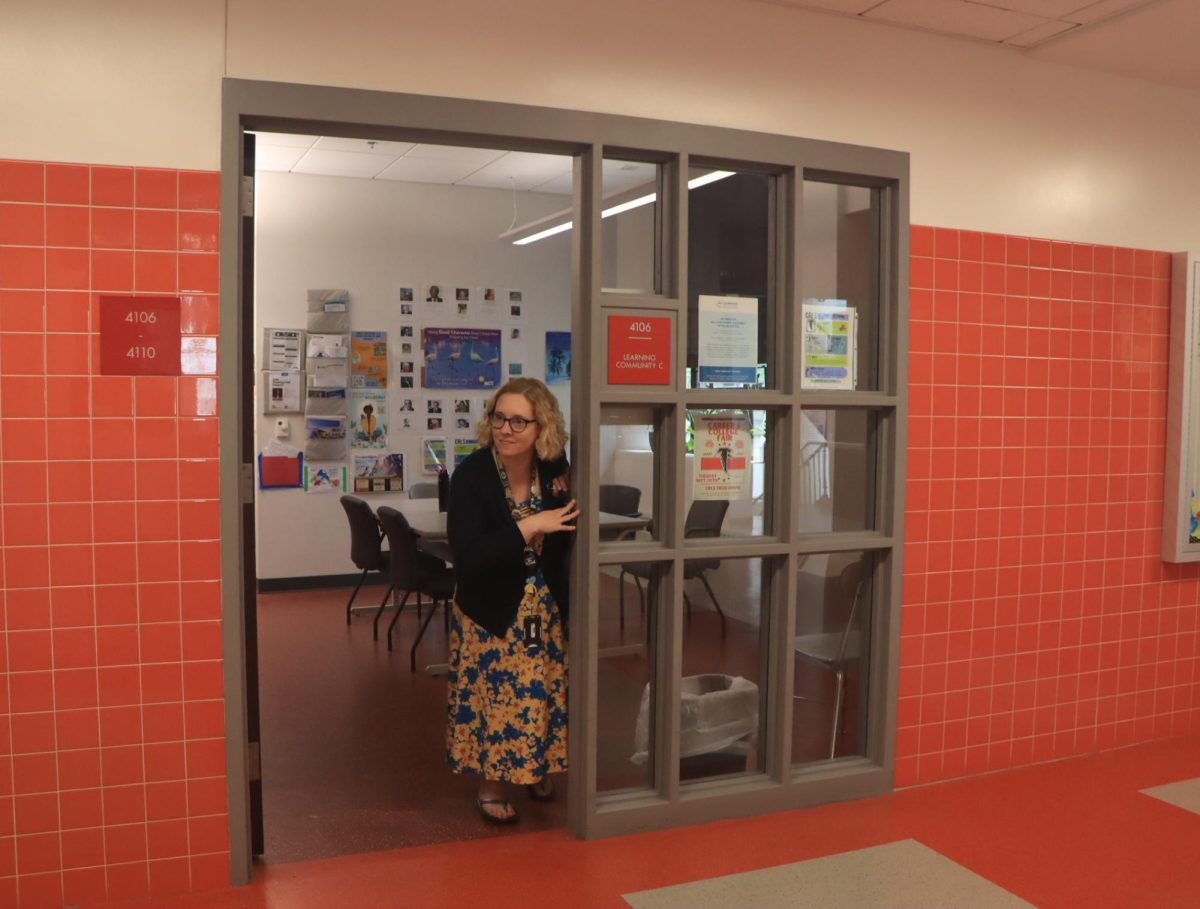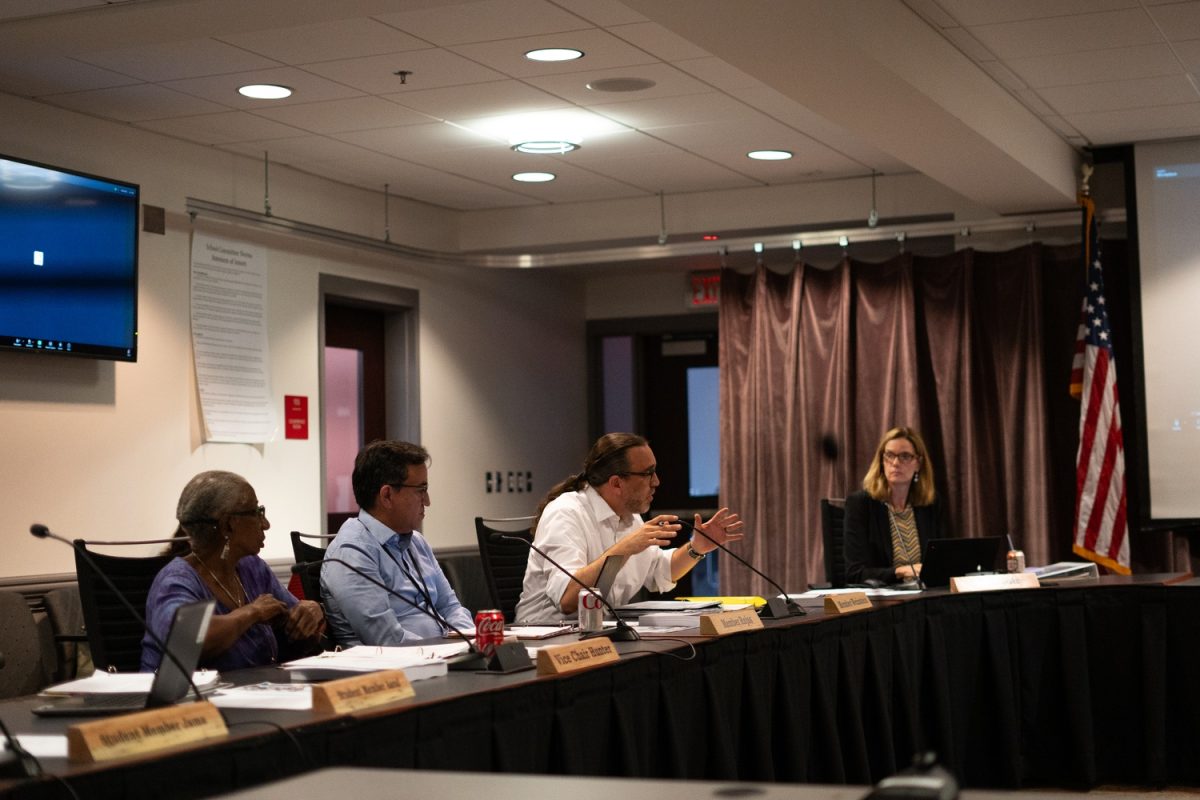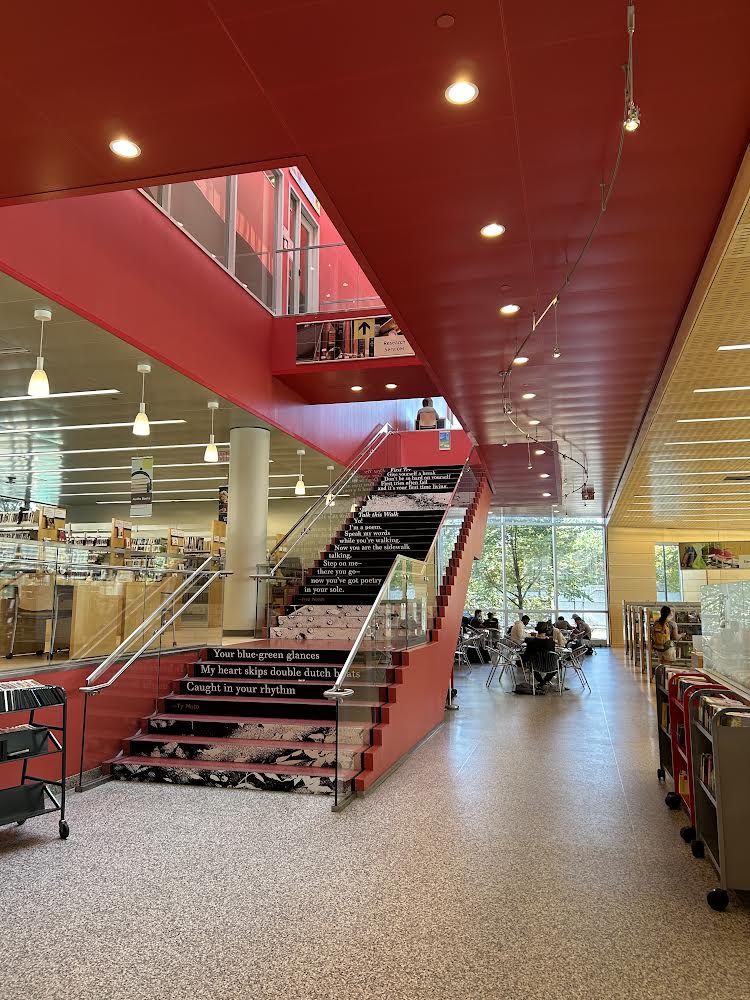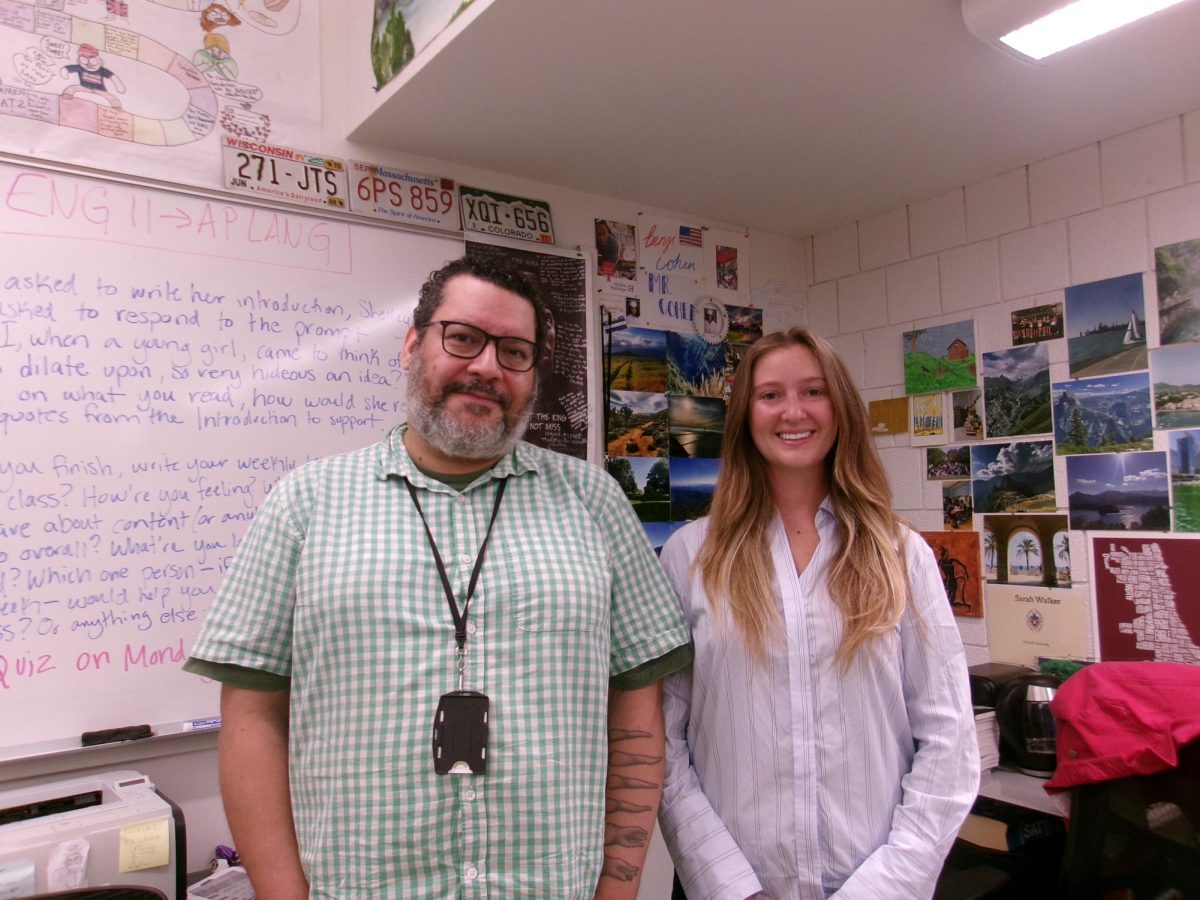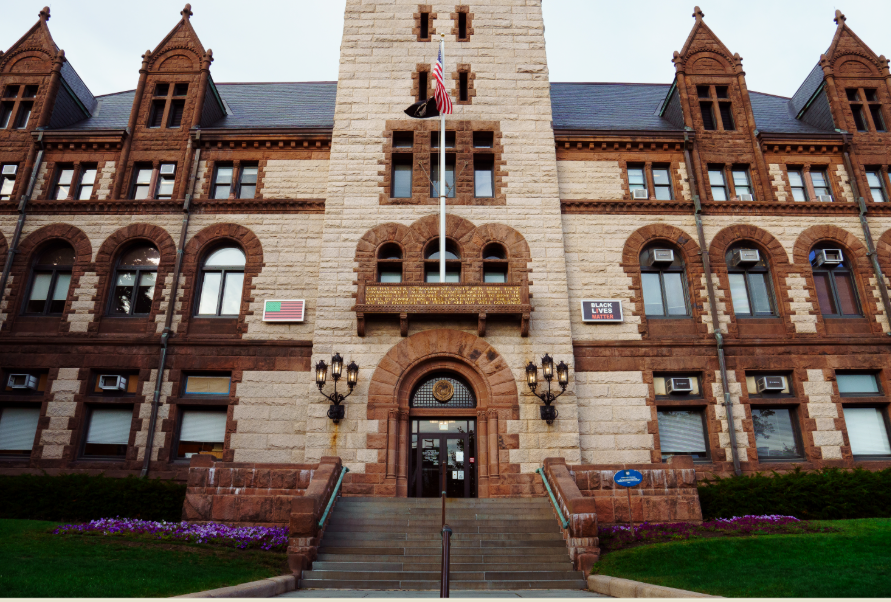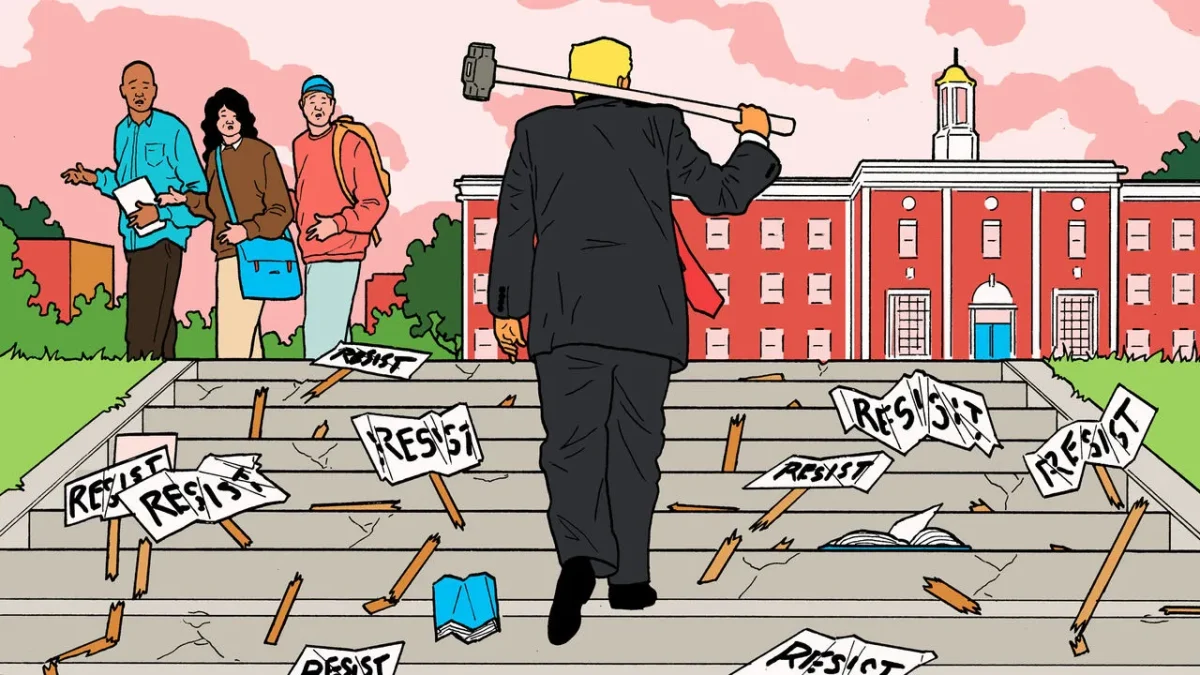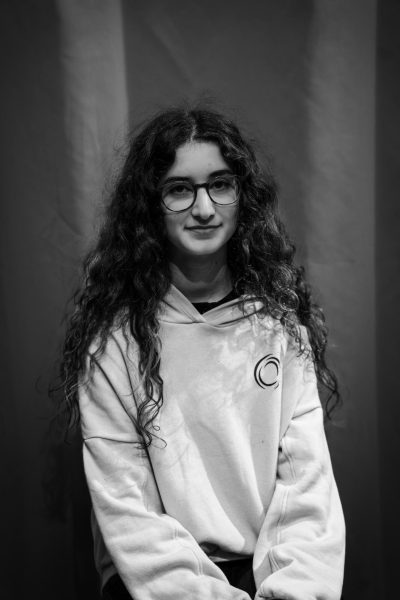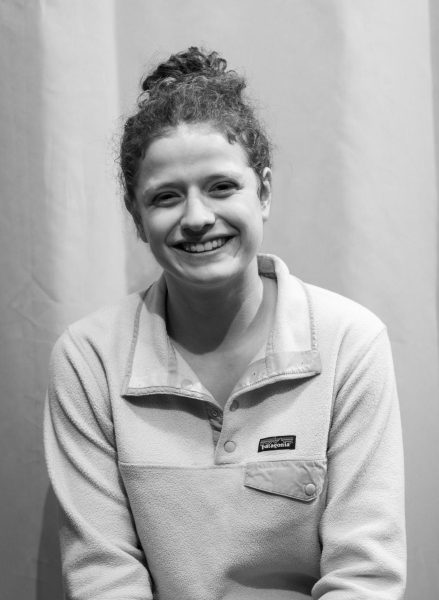New and updated whiteboard screens have been popping up around school and will be fully implemented in every classroom by the end of summer 2024. These screens take approximately 3 hours to install, and resemble large flatscreen TVs, including features such as wireless projecting and a screen that allows multiple users to draw on it. The district decided this was a necessary change because many of the old projectors, which had a ten-year lifespan and were installed around 2010, were dying out.
Some, however, don’t feel that this is the most effective solution. “I would prefer [the money] to be put into almost literally anything else,” said Intisar Chowdhury ’25. “Teacher salaries can be a lot higher. A lot of teachers are leaving, and it’s personally affected me in a number of ways.”
The new BenQ boards cost the school approximately 1 million dollars. For context, approximately 513 students signed up for AP exams during 2020, the most recent data point on CPSD’s website. One million dollars could pay for every one of those students’ AP exams, with 950,239 dollars left over to pay for any interested students’ Harvard Extension courses as well. Less than one million dollars could send over half of CRLS students to a year-long student-exchange program. And, most importantly to the ongoing CEA debate, one million dollars could give every CRLS staff member a 2,353-dollar raise.
“The boards we have now, which technically are smart boards, you can also use as a whiteboard, which most of us transitioned to doing just because it was so glitchy,” Tal Sebell-Shavit, an HN Physics teacher, told the Register Forum. “These new boards cannot be used as whiteboards, which means if there’s a day where the internet is down … there’s no way to repurpose that display in a low-tech way.”
Some also worry that the increased use of technology in classrooms affects students negatively. “Technology is so weird in its own way, especially in a classroom setting,” said Ashmita Prajapati ’25. “It disengages me from the work that we’re doing and it separates me from the classroom and that environment.”
Prajapati is not alone — a study published in the Canadian Journal for the Scholarship of Teaching and Learning found that 49% of 478 university students surveyed used technology for distracting purposes during class. A later study found a causal link between the use of technology in classrooms and lower test scores.
However, as Prajapati explained, “We’re using technology in all of our classes and we can’t separate ourselves from it. Having new updated tech makes it easier for teachers to make lesson plans more accessible for themselves and functional.”
Doug McGlathery, an AP CS teacher, agreed. “I hope that more teachers use all of the interactive features — I think there are a lot of possibilities,” he stated. “I hope that teachers really get a chance to take the time to learn them. Maybe some time can be built into their schedule to collaborate together, and to help each other learn their future.”

